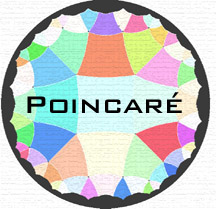EDIT (30 Nov 2012): MoMath is opening in a couple of weeks, so this seems like it might be a good time for any last-minute additions to this question before I vote to close my own question as "no longer relevant".
As some of you may already know, there are plans in the making for a Museum of Mathematics in New York City. Some of you may have already seen the Math Midway, a preview of the coming attractions at MoMath.
I've been involved in a small way, having an account at the Math Factory where I have made some suggestions for exhibits. It occurred to me that it would be a good idea to solicit exhibit ideas from a wider community of mathematicians.
What would you like to see at MoMath?
There are already a lot of suggestions at the above Math Factory site; however, you need an account to view the details. But never mind that; you should not hesitate to suggest something here even if you suspect that it has already been suggested by someone at the Math Factory, because part of the value of MO is that the voting system allows us to estimate the level of enthusiasm for various ideas.
Let me also mention that exhibit ideas showing the connections between mathematics and other fields are particularly welcome, particularly if the connection is not well-known or obvious.
A couple of the answers are announcements which may be better seen if they are included in the question.
Maria Droujkova: We are going to host an open online event with Cindy Lawrence, one of the organizers of MoMath, in the Math Future series. On January 12th 2011, at 9:30pm ET, follow this link to join the live session using Elluminate.
George Hart: ...we at MoMath are looking for all kinds of input. If you’re at the Joint Math Meetings this week, come to our booth in the exhibit hall to meet us, learn more, and give us your ideas.

 ]
]

